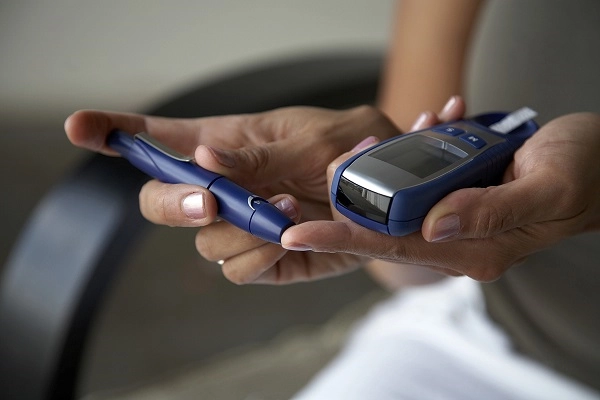The three M's of managing diabetes


Sometimes life isn’t fair, like when you are predisposed to have diabetes.
“Diabetes has a strong genetic component, but the gene mutations do not cause diabetes on their own,” said Kristen Lorenz, certified diabetes educator. “Eating more food than you need, being sedentary or gaining weight in your belly can be the environmental trigger that leads to diabetes. The key to reducing the risk of developing diabetes is modifying our lifestyle to avoid those triggers.”
Diabetes means your blood glucose (also called blood sugar) is too high. Insulin is a hormone made by the pancreas to help glucose from food get into your cells. If your body doesn’t make enough insulin or your body needs more insulin than you make (insulin resistance), the glucose stays in your blood instead of going to your cells. This can cause diabetes. The most common form of diabetes is type 2 diabetes.
By 2050, one-third of all people in the U.S. will have some form of diabetes. 10 percent of U.S. adults have it now, according to the Centers for Disease Control and Prevention.
“If diabetes is not managed, it is a very serious disease,” Lorenz said. “It can cause damage to the eyes, kidneys, nerves, gums and blood vessels, and dramatically increases your risk for heart disease and stroke.”
According to Lorenz, if you have just been diagnosed or are having difficulty managing your diabetes, ask your primary care provider for a referral to a diabetes educator right away. They will be able to answer your questions and provide resources.
She also recommends the three M’s as the best way to manage your diabetes and protect yourself from serious complications.
-
Monitor your blood glucose. It is very important to understand when and how to check your blood sugar. When you poke your finger, write down your reading and compare it to your target. Often you can figure out what you ate or did that was different to help you manage better in the future.
-
Manage your medications. Understand your prescription, how long it works, its side effects, when the best time to take it is, and what happens if you miss a dose.
-
Examine your meals. Is half your plate nonstarchy vegetables, a quarter of your plate starchy food (like potatoes, rice or pasta) and a quarter of your plate protein? Proper diet and physical activity are the keys to controlling diabetes.
Most commercial and public insurances cover diabetes education. The Salem Health diabetes education course includes eight hours of class and two hours of individual instruction with a diabetes educator and dietitian. If your insurance doesn’t cover it, WVP Health Authority provides a free, one-hour Living Well workshop over six weeks. There are diabetes support groups in Dallas and Salem. The Diabetes CARE collaborative provides a calendar of educational opportunities in the area.
“For many people, being diagnosed with diabetes is a wake-up call to take their health seriously,” said Lorenz. “It is all about letting go of the past and doing what it takes to move forward in a consciously healthy way.”